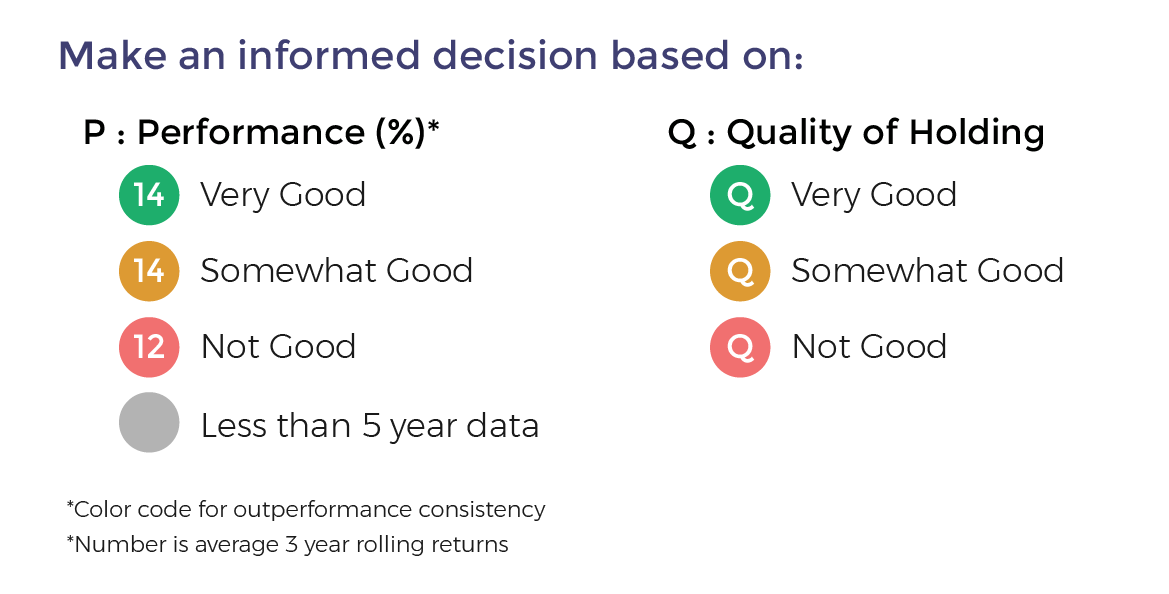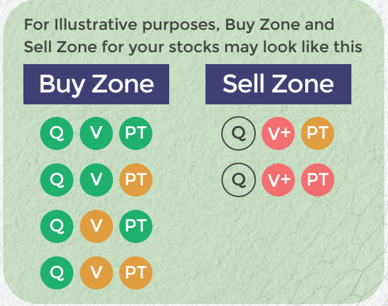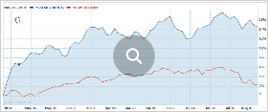Sansera Engineering
Sansera Engineering is coming out with a 100% book building; initial public offering (IPO) of 1,72,44,328 shares of Rs 2 each in a price band Rs 734 -744 per equity share.
Not more than 50% of the issue will be allocated to Qualified Institutional Buyers (QIBs), including 5% to the mutual funds. Further, not less than 15% of the issue will be available for the non-institutional bidders and the remaining 35% for the retail investors.
The issue will open for subscription on September 14, 2021 and will close on September 16, 2021.
The shares will be listed on BSE as well as NSE.
The face value of the share is Rs 2 and is priced 367 times of its face value on the lower side and 372 times on the higher side.]
Book running lead manager to the issue are ICICI Securities, IIFL Securities and Nomura Financial Advisory and Securities (India).
Compliance Officer for the issue is Rajesh Kumar Modi.
Profile of the company
The company is an engineering-led integrated manufacturer of complex and critical precision engineered components across automotive and non-automotive sectors. Within the automotive sector, it manufacture and supply a range of precision forged and machined components and assemblies, such as connecting rod, rocker arm, crankshaft, gear shifter fork, stem comp, and aluminium forged parts, that are critical for engine, transmission, suspension, braking, chassis and other systems for the two-wheeler, passenger vehicle and commercial vehicle verticals. Within the non-automotive sector, the company manufacture and supply a range of precision components for the aerospace, off-road, agriculture and other segments, including engineering and capital goods. It supplies most of its products directly to OEMs in finished (forged and machined) condition, resulting in significant value addition by it. The company is a technology-driven company with a focus on design, engineering, machine building and automation capabilities. These capabilities enable the company to roll out new products in a timely manner and develop higher strength components required for highend performance and graduate from manufacturing individual parts to the designing and manufacturing of sub-assemblies, thereby moving it up the value chain.
Most of the machines the company builds are modular by design and can be refurbished for other applications in case of a reduction in demand or a phasing out of the product for which the machine was originally built, thereby reducing its capital expenditure requirements and de-risking its business model. Its automation division, which works concurrently with its machine design and machine building divisions, has implemented multiple automation projects intended to increase its productivity and control labour costs. The company’s manufacturing operations are (i) integrated across the product cycle with the entire manufacturing process (encompassing forging, heat treatment, precision machining, other specialized processing, assembly, testing and quality control) being carried out in-house and (ii) coordinated through concurrent design and engineering, machine building and automation divisions. This enables the company to keep the core competencies required for its business within its Group, streamline its production processes, achieve shorter product development and delivery times, exercise greater control over key inputs and processes, reduce inventories and manage capital expenditure.
Proceed is being used for:
Carrying out Offer for Sale of up to 17,244,328 equity shares by the selling shareholders.
Achieving the benefits of listing the equity shares on the stock exchanges.
Industry overview
India is among the top two producers of two-wheelers globally. The two wheelers segment also dominates the Indian automobile industry accounting for approximately 80% of industry output in volume terms. Domestic two-wheeler production remained flat between Fiscals 2016 and 2021. During Fiscals 2016 to 2019, the industry’s production increased at a CAGR of 9.3%, propelled by good monsoons, the favorable economic situation, and rising exports. In Fiscal 2020 there was 14.1% decrease in production volume from Fiscal 2019, owing to transition to Bharat Stage (BS)-VI norms, and in Fiscal 2021 there was a 12.6% decrease in production due to challenges heaped by the COVID-19 pandemic. The Indian two-wheeler industry is primarily domestic-skewed, with domestic sales accounting for approximately 86% share of overall two-wheeler sales in the past five years. However, over the years, manufacturers, such as Bajaj Auto, TVS Motor Company and HMSI, have been expanding their geographical footprint. Also, joint ventures with global brands, such as KTM, BMW and Husqvarna, and catering to the global demand of these brands from India, have given an additional thrust to two-wheeler exports.
The Indian government has been taking aggressive steps to converge emission standards with global norms. In February 2016, it decided to skip BS-V norms and directly mandate BS-VI norms. Compliance with the latest emission standards requires improvement mainly in the exhaust system, thereby increasing the prices of the two-wheeler. Overall domestic two-wheeler production is expected to grow at a robust pace of 10.9% CAGR over Fiscals 2021-26 to reach approximately 31.0 million units by Fiscal 2026. Domestic sales and exports are estimated to grow at 11.2% and 9.5% CAGR, respectively, during this period. However, the risk of subsequent waves of COVID-19 cases and the need for the state and central governments to impose localised or extensive lockdown to control spread of pandemic may have an impact on supply chains as well as sales volumes. In such a case, overall industry production is also likely to be impacted over the short term.
Pros and strengths
Leading supplier of complex and high-quality precision engineered components: The company is one of the top 10 global suppliers of connecting rods in terms of production volume (units) for (i) Light Vehicles with a global market share of 2.3% in CY 2020 compared to a global market share of 0.9% in CY 2015 and (ii) CVs with a global market share of 3.0% in CY 2020 compared to a global market share of 0.9% in CY 2015. Within India, it is one of the leading manufacturers of (i) connecting rods, crankshafts, rocker arms and gear shifter forks for two-wheelers and (ii) connecting rods and rocker arms for passenger vehicles. Specifically, within two-wheelers, it is the largest supplier of connecting rods, rocker arms and gear shifter forks in India. Within passenger vehicles, it is the largest supplier of connecting rods and rocker arms in India. With a track record of developing complex and critical precision engineered components for the automotive sector over multiple decades, its capabilities can be extended to manufacture precision components for several non-automotive sectors.
Well diversified business model: The company’s business model is well diversified by customer base, end segment, geographical spread of revenues and product portfolio. It has a diversified and increasing customer base. Within India, its customers include nine of the top 10t wo-wheeler OEMs and the leading passenger vehicle OEM based on production volume for Fiscal 2021. Globally, its customers include six out of top 10 global Light Vehicle OEMs and three of the top 10 global MHCV OEMs based on production volumes for CY 2020. The company derives its revenue from multiple segments within the automotive sector, including the two-wheeler, passenger vehicle and commercial vehicle verticals. Within the non-automotive sector, it manufacture and supply a range of precision components for the aerospace, off-road, agriculture and other segments, including engineering and capital goods.
Long-standing relationships with well-known Indian and global OEM customers: Within India, the company’s customers include nine of the top 10 two-wheeler OEMs and the leading passenger vehicle OEM based on production volume for Fiscal 2021. Globally, its customers include six out of top 10 global Light Vehicle OEMs and three of the top 10 global MHCV OEMs based on production volumes for CY 2020. The company has long-standing relationships with several well-known Indian and global OEMs. Specifically, (i) in the two-wheeler vertical the company has relationships of 25 fiscal years with Bajaj, over 20 years with Yamaha and over 20 years with HMSI, the third, fifth and second largest two-wheeler Indian OEMs in terms of domestic production volume for Fiscal 2021, respectively and (ii) in the passenger vehicle vertical it has relationships of over 30 years with Maruti Suzuki, the leading Indian passenger vehicle OEM in terms of domestic production volume for Fiscal 2021, over 10 years with Stellantis N.V. (formerly Fiat Chrysler Automobiles), a leading European passenger vehicle OEM, and over 10 years with one of the leading North American passenger vehicle OEMs.
Skilled and experienced board of directors and management team: The company is an employee-driven, professionally managed organisation. It take pride in its employee culture that emphasizes teamwork and collaboration across functions, which helps ensure that its employees are able to suggest and implement ideas, regardless of their roles. Its management team is led by its Group CEO, Bindiganavile Raghunath Preetham, its Vice President of Group Operations, Praveen Chauhan, and its CFO, Vikas Goel, none of whom are its Promoters or family members of its Promoters. Bindiganavile Raghunath Preetham (Group CEO since 2013) has been with the c ofmopany for more than 28 years and has oversight across all areas of its business, including developing and maintaining relationships with its customers and suppliers. Praveen Chauhan (Vice President of Group Operations since 2016) has been with the company for more than 16 years and is responsible for its day-to-day operations.
Risks and concerns
Business depends on sale of products to certain key customers: The company is dependent on certain key customers, especially Bajaj, in the automotive sector. For Fiscals 2021, 2020 and 2019,Bajaj contributed 20.75%, 22.08% and 22.71% of its revenue from sale of products, respectively, and its top five customers contributed 59.21%, 59.46% and 60.01% of its revenue from sale of products, respectively. The loss of these customers or a loss of revenue from sales to these customers may materially affect its business, financial condition, results of operations and cash flows. Further, as it is common for large OEMs to source their required components from a relatively small number of vendors, the company’s customers often undertake vendor rationalisation to reduce costs related to procurement from multiple vendors. As a result, the volume of sales to company’s customers may vary due to changes in its customers sourcing strategies. The company cannot assure you that it will be able to significantly reduce customer concentration in the future.
Dependent on contract labour: The company’s workforce comprises contract workmen and employees. In order to retain flexibility and thereby control costs, the company appoints independent contractors who in turn engage on-site contract labour for performance of certain of its operations in India. If it is unable to obtain the services of skilled and unskilled workmen at reasonable rates it will have an adverse effect on its business and results of operations. In addition, its manufacturing process is dependent on a technology-driven production system and any inability of the contract labourers to familiarize themselves with such technology could adversely affect its business and results of operations. Although the company does not engage these labourers directly, it may be held responsible for any wage payments to be made to such labourers in the event of default by such independent contractors. However, the amount paid in such an event can be recovered from the independent contractor.
Depends on third party suppliers: The company is dependent on third party suppliers for the supply of its raw materials and assembled components. Its ability to identify and build relationships with reliable suppliers contributes to its growth and its successful management of its inventory as well as other aspects of its operations. In the absence of long-term contracts, it cannot assure you that a particular supplier will continue to supply its products in the future. There have been instances in the past where it experienced interruptions in the supply of raw materials, bought out components and assembly parts to it. Further, there can be no assurance that increased demand, capacity limitations or other problems experienced by its suppliers will not result in occasional shortages or delays in their supply of raw materials. Any change in the supply pattern of its raw materials can adversely affect its business and results of operations.
Substantial capital expenditure, working capital requirements: The company’s business is capital intensive as it seek to add to and upgrade its existing manufacturing facilities, increase its product portfolio and invest in researching and developing new technologies and products, among others. The actual amount of its future capital requirements may differ from estimates as a result of, among other factors, unforeseen events beyond its control, such as lockdowns due to the COVID-19 pandemic, unforeseen delays or cost overruns, unanticipated expenses, regulatory changes, economic conditions, engineering design changes, weather related delays, technological changes, additional market developments and new opportunities in the precision components industry. Its sources of additional financing where required to meet its capital expenditure plans may include the incurrence of debt, the issuance of equity or debt securities or a combination of both.
Outlook
Incorporated in 1981, Sansera Engineering manufactures complex and critical precision engineered components and caters across automotive and non-automotive sectors. The company manufactures and supplies a wide range of precision forged and machined components and assemblies which are critical for the two-wheeler, passenger vehicle, and commercial vehicle verticals for the automotive sector. For the non-automotive sector, the company manufactures and supplies a wide range of precision components for aerospace, off-road, agriculture, and other segments. The company mostly supplies forged & machined products to OEM’s. Its business model is well diversified by customer base, end segment, geographical spread of revenues and product portfolio. It has focused on increasing its export revenues with a view to reduce dependence on the Indian market. The company’s varied product offerings and continuous product development efforts have enabled it to cater to multiple sectors and customers, enhance its ability to attract new customers. On the concern side, the company’s business, results of operations, financial condition and cash flows are affected by levels of Indian and global vehicle production, particularly two-wheelers passenger vehicles and commercial vehicles (CV), and are therefore affected by factors that generally affect the automotive industry in India and globally. Besides, it faces competition in India and overseas in its business, which is based on many factors, including product quality and reliability, breadth of product range, product design and innovation, technology, manufacturing capabilities, distribution channels, scope and quality of service, price and brand recognition.
The issue has been offered in a price band of Rs 734-744 per equity share. The aggregate size of the offer is around Rs 1265.73 crore to Rs 1282.97 crore based on lower and upper price band respectively. On the performance front, the company’s revenue from operations increased by 6.32% to Rs 15,492.71 million for Fiscal 2021 from Rs 14,571.70 million for Fiscal 2020. This increase was primarily due to increases in its sales of products, tooling income and scrap sale. Its profit for the year increased by 37.49% to Rs 1,098.60 million for Fiscal 2021 from Rs 799.05 million for Fiscal 2020. The company intends to focus on consolidating its leading market share, both globally and in India across its existing product portfolio. Further, it intends to develop multiple technology driven systems and components to cater to growing opportunities in electrification of vehicles. It is in the process of setting up a dedicated facility for hybrid and electric components in Plant 2 and it expects this facility to be commissioned during Fiscal 2022. It intends to increase the number of engine and landing gear components and graduate to supply of subsystems and assemblies. In addition, it plans to expand the end use application of its components from civilian aerospace to defence aerospace.































